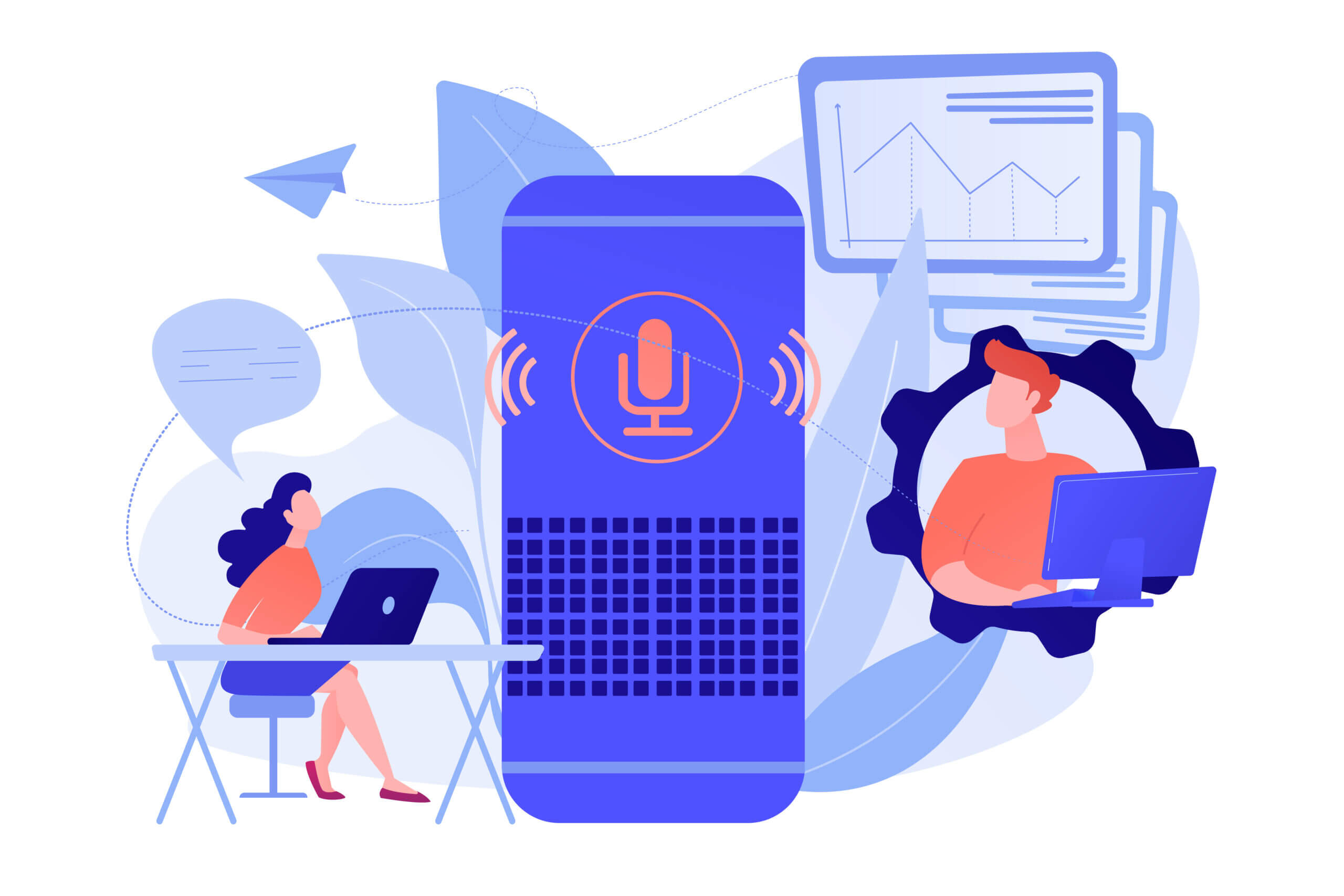Introduction:
Have you ever wondered how some digital voices sound so eerily human-like? Well, the answer lies in the realm of the best AI voice generator. These modern marvels have revolutionized the way we interact with digital media, seamlessly converting written text into lifelike speech that mimics human intonations and accents. From English to Mandarin, French to Arabic, they cover a plethora of languages, making them ubiquitous in today’s globalized world.
You’ve probably encountered them without even realizing it. They narrate YouTube videos, lend voices to podcasts, and even feature in video games and corporate communications. But how do they work, and what makes them so effective?
In this article, we’ll embark on a journey to unravel the mysteries of AI voice generators. We’ll delve into their inner workings, explore their diverse applications, and showcase their transformative impact on technology and communication. By the end, you’ll gain a comprehensive understanding of these remarkable tools shaping the digital landscape. Get ready to discover the fascinating world of AI voice generators!
How do AI Voice Generators Work?
Imagine you’re teaching a robot to speak like a human. That’s essentially what AI voice generators do but with a lot more sophistication. These clever systems rely on something called deep learning, a fancy term for a type of artificial intelligence that learns by studying tons of data.
So, how does it all happen? Well, first off, the system needs to learn how people talk. It does this by listening to a massive collection of recorded voices. Think of it like a language crash course for robots. During this training phase, the AI picks up on all sorts of speech patterns – the way we stress certain words, our accents, and even how fast or slow we talk.
Once the AI has soaked up enough speech data, it’s ready to start talking on its own. When you type something into the AI, like a sentence or a paragraph, it goes to work. It breaks down your text into tiny speech-building blocks called phonetic components. Then, using a fancy process called text-to-speech (TTS) technology, it stitches these components together to form words and sentences.
But here’s where it gets cool. Some AI voice generators go the extra mile by using something called Natural Language Processing (NLP). This helps them understand not just what you’re saying, but how you’re saying it. They can detect things like sarcasm, questions, or excitement in your text and adjust their speech to match. It’s like having a robot that knows when to sound serious or when to crack a joke.
And the best part? As technology marches forward, these AI voice generators just keep getting better. They’re constantly fine-tuning their skills, becoming more and more human-like with each update. So next time you hear a digital voice that sounds surprisingly real, just remember – there’s a whole lot of clever AI magic happening behind the scenes.
Text-to-Speech Versus AI Voice Generation
Text-to-Speech:
1. Basic Synthesis: Text-to-speech simply converts written text into synthesized speech using standard digital voices.
2. Limited Customization: With TTS, you’re typically stuck with pre-set voices and basic adjustments like pitch and speed. This often leads to robotic-sounding speech.
3. Robotic Sound: Because of its simplicity, TTS often lacks the natural nuances of human speech, making it sound more mechanical.
4. Straightforward Usage: TTS is commonly used for straightforward tasks like reading text aloud, such as in accessibility tools or GPS navigation systems.
5. One-Size-Fits-All: It usually follows a one-size-fits-all approach, lacking the ability to customize voices extensively.
6. Unidirectional: TTS typically reads text as it is, without much adaptability or context-awareness.
7. Simpler Technology: It relies on simpler speech synthesis technology, making it suitable for basic applications.
8. Common Applications: TTS finds its place in accessibility tools, GPS navigation systems, and basic voice assistants.
AI Voice Generation:
1. Advanced Algorithms: AI Voice Generation employs sophisticated machine learning algorithms to create more natural-sounding voices.
2. Extensive Customization: Unlike TTS, AI Voice Generation offers extensive customization options, including voice cloning and nuanced emotional tones.
3. Human-like Speech: Thanks to its advanced algorithms, AI Voice Generation produces highly realistic and human-like speech, eliminating the robotic sound of TTS.
4. Dynamic Content Creation: It’s used for creating dynamic and engaging audio content, accurately mimicking human speech patterns.
5. Tailored Voices: AI Voice Generation allows for the creation of unique voices tailored to specific needs or characters, offering more diversity and flexibility.
6. Contextual Adaptability: It can interact more fluidly in conversational AI settings, adapting its tone and style contextually to the conversation.
7. Complex AI Models: AI Voice Generation relies on complex AI models like neural networks for voice generation, enabling superior quality.
8. Versatile Applications: It’s ideal for high-quality voiceovers, virtual assistants, gaming, and personalized customer interactions, among other applications.
What Can You Use AI Voice Generators For?
Let’s explore the diverse applications of AI voice generators:
1. E-learning: If you’re into creating educational content, AI voices are your new best friend. They provide consistent and crystal-clear narration for all sorts of subjects, making learning more accessible and engaging for students of all levels.
2. Podcasts: Podcasters, listen up! AI voices can be a game-changer for your content production. Whether you’re running a solo show or managing a team, these voices offer flexibility and efficiency, especially when you’re dealing with multilingual content. Plus, they can help maintain a consistent tone across episodes.
3. Audiobooks: Authors, rejoice! Gone are the days of hunting down voice actors for your audiobooks. With AI, you can now have your books narrated in no time, saving both time and money. Plus, you can choose from a variety of voices to match the tone of your writing perfectly.
4. Social Media: Want to spice up your social media content? AI voiceovers are the way to go. Whether you’re creating videos, tutorials, or promotional material, these voices can add that extra touch of professionalism and engagement, especially when traditional voiceover resources are hard to come by.
5. Video Gaming: Gamers, this one’s for you. AI voices are not just for background noise anymore. They’re adding depth to character dialogues and game narration, immersing players even deeper into the gaming experience. So next time you’re exploring a virtual world, pay attention – that voice guiding you might just be powered by AI.
What Are the Best AI Voice Generators?
When it comes to picking the best AI voice generator, quality, versatility, and user-friendliness are top priorities. Let’s take a look at three standout options: PlayHT, Descript, and MurfAI. Each brings something unique to the table, catering to different needs and preferences.
1. PlayHT: Known for its high-quality AI voices, PlayHT excels in delivering realistic and natural-sounding speech. Whether you’re working on podcasts, e-learning content, or social media videos, PlayHT offers a wide range of voices to choose from, ensuring your projects sound professional and engaging.
2. Descript: If versatility is what you’re after, Descript has you covered. This AI voice generator not only offers top-notch speech synthesis but also comes with powerful editing tools. You can easily tweak your audio recordings, add music, and even remove filler words – all in one intuitive platform.
3. MurfAI: For those looking for a seamless user experience, MurfAI ticks all the boxes. With its simple interface and easy-to-use features, generating AI voices has never been easier. Whether you’re a seasoned professional or just starting, MurfAI makes it effortless to create high-quality audio content.
What is Voice Cloning?
Voice cloning is like giving AI the ability to mimic someone’s voice, capturing not just what they say but how they say it – the unique quirks and nuances that make their voice their own. It’s a pretty big deal in the world of speech tech because it opens up a whole new realm of possibilities.
Here’s how it works: Using deep learning, AI analyzes a person’s voice by listening to tons of recordings. It pays attention to things like pitch, tone, accent, and even subtle speech patterns. With all that data, the AI can then create a digital version of that person’s voice, almost like a clone.
Now, why does this matter? Well, imagine you’re a video game developer. Instead of hiring voice actors for all your characters, you could use voice cloning to create unique voices for each one. Or picture having a personalized voice assistant that sounds just like you – it’s like having your own digital twin!
But, of course, there are some important things to consider. Like, what if someone uses your voice without your permission? Or what if the technology gets into the wrong hands and starts spreading fake news or scams? These are real concerns that need to be addressed as voice cloning becomes more widespread.
Still, despite these challenges, voice cloning holds a lot of promise. It could give content creators more freedom to use their voices in different ways or help voice actors build diverse portfolios. As AI keeps evolving, the goal is to make these cloned voices even more realistic while making sure they’re used responsibly and ethically.
What are Voice Changers?
Let’s talk about voice changers – those nifty tools that can make you sound like a whole different person! Whether you’re gaming online, recording voiceovers, or just messing around with friends, these little gadgets can transform your voice.
So, what exactly are they? Well, they can be either software or hardware, and their main job is to tweak the pitch or tone of your voice. It’s like having your personal voice makeover studio right at your fingertips!
You’ve probably heard them in action before – maybe someone sounded like a robot or a chipmunk during a game, or perhaps they pulled off a flawless Darth Vader impression. That’s all thanks to voice changers doing their magic.
But here’s the cool part – they’re not just for fun and games. Voice changers also have some practical uses. For instance, they can help protect your privacy by disguising your voice during phone calls or online chats. Plus, they’re handy for adding some extra flair to your recordings or presentations.
And guess what? Voice changers are getting even smarter thanks to advancements in speech AI. Now, they can do more than just tweak your pitch – they can transform your speech in real time using AI algorithms. This opens up a whole new world of possibilities, from creating lifelike digital avatars to improving accessibility for people with speech disabilities.
As speech AI continues to evolve, we’re seeing more and more exciting applications emerge. Imagine personalized e-learning experiences with virtual tutors, or chatbots that sound so human-like you’d never guess you’re talking to a machine!
So, whether you’re looking to have some fun or enhance your digital interactions, voice changers, and speech AI are worth keeping an eye on. Who knows what kind of voice transformations the future holds?
Conclusion: Best AI Voice Generator
In conclusion, the exploration of AI voice technology reveals a landscape rich with innovation and potential. From AI voice generators to voice cloning and voice changers, these tools are reshaping how we interact with digital media and the possibilities seem endless.
AI voice generators, with their ability to convert text into lifelike speech, have become integral across various industries, from entertainment to education. Their transformative impact is evident in the seamless integration of human-like voices into digital content, enriching user experiences and enhancing accessibility.
Voice cloning, while presenting ethical considerations, offers promising opportunities for personalized interactions and creative expression. As technology advances, the challenge lies in ensuring responsible use and safeguarding against misuse.
Meanwhile, voice changers continue to evolve, providing both entertainment and practical applications, such as privacy protection and accessibility improvements.
As we navigate this ever-changing landscape of voice technology, it’s clear that the journey is far from over. With continued innovation and responsible implementation, the future holds exciting possibilities for further enhancing digital communication and human-machine interaction.

